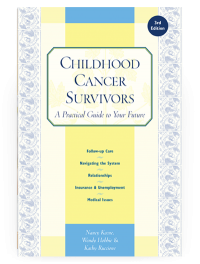Childhood Cancer Survivors
Chapter 16. Immune System
The courage of life is often a less dramatic spectacle than the courage of the final moment; but it is no less a magnificent mixture of triumph and tragedy.
— John Fitzgerald Kennedy, Profiles in Courage
THE IMMUNE SYSTEM is the body’s defense against harmful organisms and substances. It is made up of a variety of cells, organs, and systems, ranging from individual white cells to the entire lymphatic system. One of its primary functions is to fight infectious diseases such as influenza and the common cold. The immune system identifies foreign substances and neutralizes, eliminates, or breaks them down into harmless components.
Radiation, chemotherapy, stem cell transplantation, and removal of the spleen can result in decreased immune function (called immunosuppression) and decreased production of blood cells (called myelosuppression). This chapter discusses the lymphatic system (which includes the spleen and lymph nodes) and bone marrow. It describes the damage to these organs, the signs and symptoms of damage, how to screen for late effects, and medical management of these effects. Throughout the chapter, several survivors share their stories and advice about late effects of the immune system.
Table of Contents
All Guides- 1. Survivorship
- 2. Emotions
- 3. Relationships
- 4. Navigating the System
- 5. Staying Healthy
- 6. Diseases
- 7. Fatigue
- 8. Brain and Nerves
- 9. Hormone-Producing Glands
- 10. Eyes and Ears
- 11. Head and Neck
- 12. Heart and Blood Vessels
- 13. Lungs
- 14. Kidneys, Bladder, and Genitals
- 15. Liver, Stomach, and Intestines
- 16. Immune System
- 17. Muscles and Bones
- 18. Skin, Breasts, and Hair
- 19. Second Cancers
- 20. Homage
- Appendix A. Survivor Sketches
- Appendix B. Resources
- Appendix C. References
- Appendix D. About the Authors
- Appendix E. Childhood Cancer Guides (TM)

